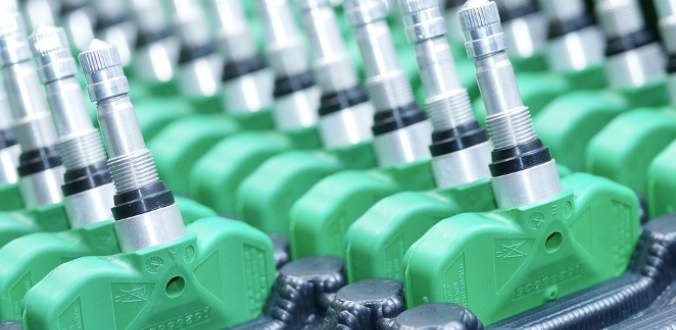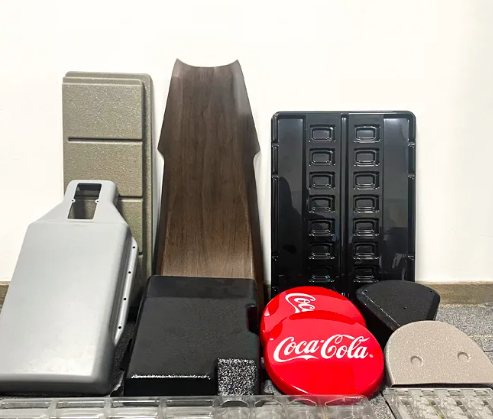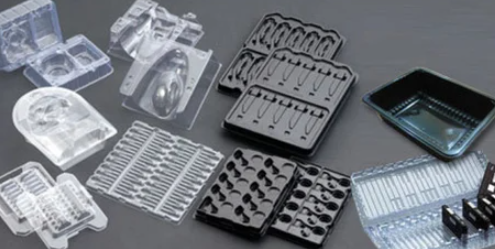Thermoforming and vacuum forming are similar but distinct processes; each has unique techniques and applications.

Introduction to Thermoforming and Vacuum Forming
Thermoforming and vacuum forming are manufacturing processes widely used in industries ranging from automotive to packaging. These processes involve shaping thermoplastic materials into desired forms by applying heat and pressure or vacuum.
Definition and Basic Principles
The range of materials compatible with thermoforming includes polystyrene, PVC, and ABS. The process excels in versatility and cost-effectiveness, particularly for large parts.
Key Aspects:
- Heat Application: Thermoforming heats the material just enough to make it bendable.
- Molding: The soft material is then pressed against a mold to take its shape.
- Cooling and Trimming: After shaping, the material is cooled to retain its new form and trimmed off any excess.
Vacuum Forming: A subtype of thermoforming, vacuum forming involves heating a plastic sheet and then drawing it into a mold using a vacuum. This method is popular for its simplicity and lower costs, especially suitable for PVC and PETG materials.
Key Aspects:
- Heating the Sheet: Similar to thermoforming, but often at slightly lower temperatures.
- Vacuum Application: A vacuum is used to suck the sheet into the mold.
- Finishing Process: After forming, cooling and trimming are done as in thermoforming.
Brief History of Both Processes
Thermoforming:
- Early 20th Century Origins: Thermoforming’s roots trace back to the 1930s with the development of the plastics industry.
- Post-WWII Expansion: Post-1945, the demand for plastic products led to significant advancements in thermoforming technologies.
Vacuum Forming:
- Mid-20th Century Development: Vacuum forming was pioneered in the 1950s as an offshoot of thermoforming.
- Technological Advancements: Over the years, improvements in control systems, materials, and vacuum technology have greatly enhanced its efficiency and versatility.
Comparative Analysis of Thermoforming and Vacuum Forming
Thermoforming and vacuum forming, while similar in their use of heat and plastic materials, have distinct characteristics and applications. Understanding their similarities and differences is crucial for manufacturers and designers in selecting the appropriate process for their projects.
Key Similarities
- Use of Thermoplastic Materials: Both processes use thermoplastics which can be reheated and reshaped, offering recyclability. Common materials include Polystyrene, PVC, and PET.
- Heating Mechanism: They both heat the plastic to a pliable state before forming. The optimal temperature range for this heating varies depending on the material’s properties.
- Forming Process: In both methods, the heated sheet conforms to the shape of a mold. This allows for the creation of complex shapes and designs.
- Applications: They find use in various industries, from packaging and automotive to consumer products, thanks to their versatility.
Distinct Differences
- Method of Forming:
- Thermoforming: Involves using pressure or mechanical force to shape the heated plastic sheet against the mold.
- Vacuum Forming: Uses a vacuum to suck the heated sheet into the mold.
- Complexity and Detail:
- Thermoforming: Capable of producing more detailed and complex shapes. The use of pressure allows for finer detailing.
- Vacuum Forming: Generally used for simpler shapes. The vacuum may not be as effective in intricate detailing.
- Cost Implications:
- Thermoforming: Typically involves higher initial costs due to more complex machinery and molds. However, it offers greater precision and quality.
- Vacuum Forming: Lower initial costs make it ideal for small-scale productions and prototypes.
- Efficiency and Speed:
- Thermoforming: Often faster in cycle times, especially for large-scale productions, due to advanced machinery.
- Vacuum Forming: Slower, but its simplicity makes it suitable for shorter runs and custom products.
- Material Thickness:
- Thermoforming: Can handle a wider range of material thicknesses, offering more flexibility in product design.
- Vacuum Forming: Generally limited to thinner materials.
Applications and Materials
Thermoforming and vacuum forming play vital roles in various industries, shaping a multitude of products and components. The choice of materials in these processes is pivotal, impacting the final product’s properties and applications.
Common Applications in Industry
- Packaging Industry:
- Food Packaging: Custom trays and clamshell packaging for fresh produce, baked goods, and ready-to-eat meals.
- Pharmaceutical Packaging: Blister packs and medicine trays, offering sterility and protection.
- Automotive Industry:
- Interior Panels: Dashboards, door panels, and consoles.
- Protective Components: Bumper covers and liners.
- Consumer Products:
- Home Appliances: Refrigerator liners, washing machine drums.
- Toys and Recreational Items: Playhouses, helmets, and kayak hulls.
- Medical Equipment:
- Device Enclosures: Housings for medical devices and diagnostic equipment.
- Sterile Packaging: Trays and containers for surgical instruments.
- Construction and Building:
- Fittings and Fixtures: Bathroom and kitchen panels, decorative elements.
- HVAC Components: Ductwork and vent covers.
- Aerospace Industry:
- Cabin Components: Overhead bins, seat components.
- Protective Panels: Covers and insulating panels for various equipment.
Materials Used in Thermoforming and Vacuum Forming
- Polystyrene (PS):
- Applications: Packaging, disposable cups, and containers.
- Properties: Lightweight, cost-effective, easy to form.
- Polyvinyl Chloride (PVC):
- Applications: Medical device packaging, blister packs.
- Properties: Durable, flexible, good chemical resistance.
- Acrylonitrile Butadiene Styrene (ABS):
- Applications: Automotive components, consumer electronics.
- Properties: High impact strength, good dimensional stability.
- Polyethylene (PE):
- Applications: Containers, lids, and automotive parts.
- Properties: Tough, chemical resistant, varies from low to high density.
- Polyethylene Terephthalate Glycol (PETG):
- Applications: Medical packaging, food-safe containers.
- Properties: Excellent clarity, good chemical resistance, easy to sterilize.
- Polycarbonate (PC):
- Applications: Bulletproof glass, electronics, and aerospace components.
- Properties: Extremely strong, transparent, temperature resistant.

Technical Aspects and Process Comparison
Exploring the technicalities of thermoforming and vacuum forming reveals how each process leverages specific equipment and technology to transform plastic sheets into final products.
Equipment and Technology Involved
Thermoforming:
- Machinery: It involves sophisticated thermoforming machines that can handle various sizes of plastic sheets. These machines come with advanced heating systems, press mechanisms, and cutting tools.
- Technology: Modern thermoforming machines incorporate CNC (Computer Numerical Control) technology for precise cutting and shaping, enhancing efficiency and accuracy.
- Material Handling: Automated material handling systems are often integrated to feed plastic sheets into the machine and remove finished products, reducing labor costs and time.
Vacuum Forming:
- Machinery: Vacuum forming requires simpler equipment. The key components are a heating element to soften the plastic and a vacuum system to mold it onto the form.
- Simplicity and Accessibility: Due to its relatively simple machinery, vacuum forming is more accessible and affordable, especially for small businesses and educational institutions.
- Customization: Equipment for vacuum forming is often easier to customize or modify for specific project needs, providing flexibility for unique designs.
Step-by-Step Process Breakdown
Thermoforming Process:
- Heating: The plastic sheet is heated until it becomes flexible.
- Molding: The heated sheet is then placed on a mold. Presses or mechanical arms apply force to push the plastic into the mold’s shape.
- Cooling: The formed plastic is cooled to harden and maintain its shape.
- Trimming: Excess material is trimmed away, and the final product is finished.
Vacuum Forming Process:
- Heating: Similar to thermoforming, the plastic sheet is heated until pliable.
- Vacuum Application: The heated sheet is then exposed to a vacuum, which sucks it onto the mold, ensuring it takes the mold’s shape.
- Cooling and Release: After forming, the plastic is cooled and then removed from the mold.
- Finishing: The product undergoes trimming and any additional finishing needed.
Advantages and Limitations
Both thermoforming and vacuum forming have unique strengths and face specific challenges, influencing their suitability for different applications.
Advantages of Each Process
Thermoforming:
- Versatility: Handles a wide range of materials and thicknesses, suitable for complex and large parts.
- Precision and Quality: High-quality finishes with precise details, thanks to advanced technology like CNC.
- Efficiency: Faster production cycles for large-scale manufacturing, enhanced by automation.
- Customization: Adaptable to custom designs and intricate shapes, catering to diverse industry needs.
Vacuum Forming:
- Cost-Effectiveness: Lower initial investment and operational costs, ideal for small-scale productions and prototypes.
- Simplicity: Easier to set up and operate, making it accessible for smaller businesses and educational purposes.
- Flexibility: Suitable for a wide range of applications, from simple packaging to complex automotive parts.
- Material Efficiency: Less waste produced compared to other forming processes, as it can use thinner materials effectively.
Limitations and Challenges
Thermoforming:
- Cost: Higher initial investment in machinery and tooling.
- Material Constraints: Not all materials are suitable for the high heat and pressure involved.
- Size Limitations: Larger equipment needed for bigger parts, increasing space and cost requirements.
Vacuum Forming:
- Detail and Precision: Less capable of producing highly detailed or deeply drawn parts compared to thermoforming.
- Material Limitations: Generally limited to thinner materials; thicker sheets may not form as effectively.
- Scaling Up: Less efficient for large-scale production runs due to slower cycle times and manual operations.

Case Studies and Real-World Examples
Exploring real-world applications and recent innovations in thermoforming and vacuum forming provides insight into their practical uses and advancements.
Industry-Specific Applications
Automotive Industry:
- Thermoforming Use: High-end car manufacturers use thermoforming for creating intricate interior panels and exterior body parts. The process allows for the production of durable, lightweight components that conform to the strict aesthetic and safety standards of the automotive industry.
- Example: A luxury car brand recently employed thermoforming to develop a new series of lightweight, yet strong, dashboard components, significantly reducing the vehicle’s overall weight and improving fuel efficiency.
Medical Equipment:
- Vacuum Forming Use: Vacuum forming is extensively used in the medical sector for creating sterile packaging for instruments and devices. This method ensures high standards of cleanliness and precision, essential in medical applications.
- Example: A medical device company innovatively used vacuum forming to produce cost-effective, sterile packaging for a new line of surgical instruments, ensuring safety and affordability.
Innovations and Recent Developments
Thermoforming:
- Advanced Material Use: Recent advancements include the use of sustainable and biodegradable materials in thermoforming. Companies are experimenting with plant-based plastics to reduce environmental impact while maintaining the quality and durability of products.
- Technological Integration: Integration of AI and IoT in thermoforming machines is enhancing precision and efficiency.
Vacuum Forming:
- Customization and Prototyping: The introduction of desktop vacuum forming machines has revolutionized prototyping and small-scale manufacturing. These compact machines allow designers and small businesses to produce high-quality prototypes rapidly and affordably.
- Energy Efficiency: New vacuum forming machines are being designed with energy efficiency in mind, reducing power consumption and operational costs. This development is particularly important for small-scale operations where cost efficiency is crucial.




